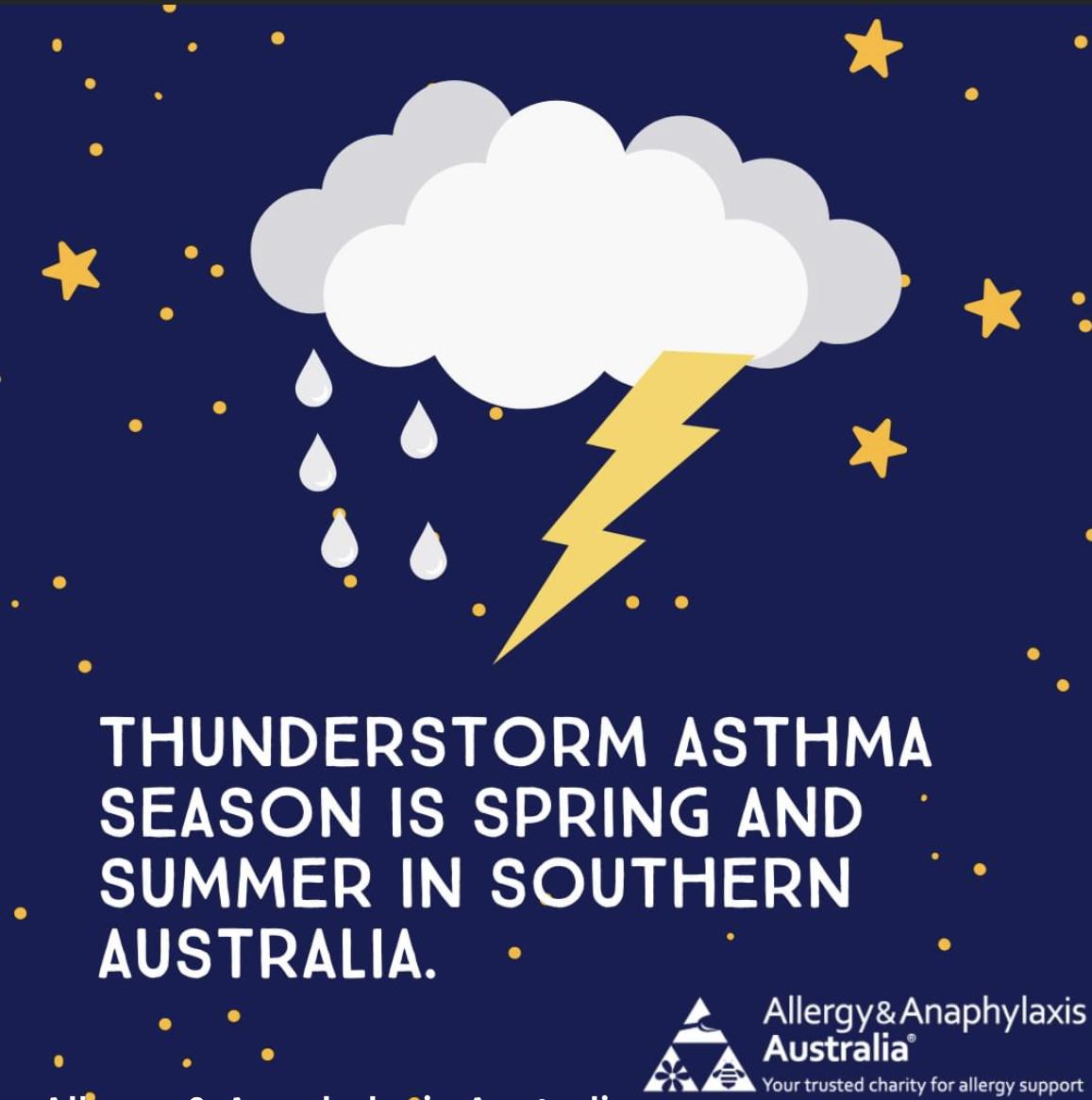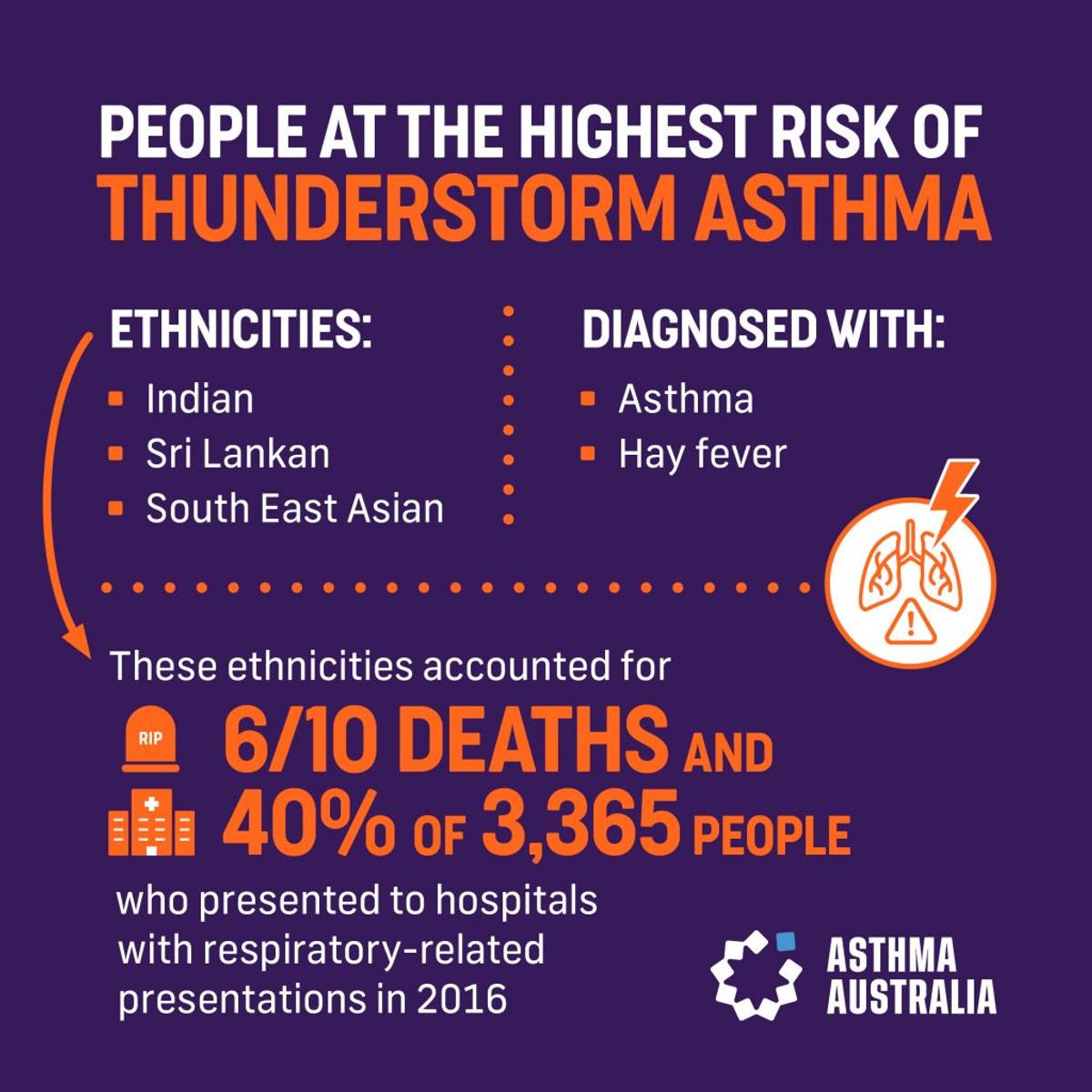Health & Wellness

THUNDERSTORM ASTHMA
Information from Allergy & Anaphylaxis Australia and Asthma Australia
Did you know that thunderstorm asthma can affect people who have never had asthma?
Thunderstorm asthma affects some people with allergic rhinitis (hay fever) as well as those with asthma. To lower your thunderstorm asthma risk, make sure that your allergic rhinitis symptoms are well controlled—chat to your doctor about the best ways to manage your allergic condition. Thunderstorms are common in spring and summer, so if you have allergic rhinitis try to stay inside with windows and doors closed on high pollen days, especially during a thunderstorm.
If you live in south-eastern Australia you can check the pollen count in your area. ASCIA has some helpful thunderstorm asthma information.
Be Prepared
It is important to be thunderstorm asthma aware and prepared for the upcoming thunderstorm season, it could save your life or your loved one.
According to the Department of Health and Human Services, there is a greater risk of an Epidemic Thunderstorm Asthma event occurring this year due to a wet spring encouraging grass growth. This is caused by the La’Nina effect, which usually means above-average winter–spring rainfall for Australia.
To ensure all members of the community are best prepared this thunderstorm season, Asthma Australia has information to help if an epidemic thunderstorm asthma warning is issued.
Are you of Indian or Asian decent and live in Victoria and South Western New South Wales?
Do you sneeze, get itchy, red or watery eyes, a runny or blocked nose or have any difficulty breathing due to spring allergies and asthma?
If so, you may be at risk of thunderstorm asthma.
Thunderstorm asthma may happen anytime during September to January when Rye Grass pollen levels are high. Thunderstorm asthma affects your breathing and can be dangerous. In 2016 thousands of people were hospitalised and several tragically lost their lives.
This year, there is a greater risk of Epidemic Thunderstorm Asthma events occurring due to the La Nina effect - which usually means above-average winter–spring rainfall for Australia.
In 2016, Melbourne’s thunderstorm asthma epidemic caused 10 deaths and thousands of people to go to hospital. People from Indian and South East Asian backgrounds had the largest death rate (six people out of the ten deaths were of Indian and South East Asian backgrounds) and represented 40% of the 3,365 people who presented to hospital. People with hay fever and asthma are particularly vulnerable but many people don’t realise they may be at risk. Signs of hay fever and asthma can be:
- Sneezing
- Runny or blocked nose
- Itchy, red or watery eyes
- Difficulty breathing or tightness in the chest
- Cough
- Wheezing sound when breathing.
Thunderstorm asthma can happen very quickly and strongly. You need to be thunderstorm asthma aware and prepared; it could save your life or your loved one.
To prepare for a thunderstorm asthma event, people living in South Eastern Australia, particularly in Victoria and South Western New South Wales are advised to:
- Find out now if you’re at risk. Discuss allergy and asthma symptoms with your doctor.
- Your doctor might conduct or refer you for allergy testing
- Control asthma and hay fever with daily preventative treatment provided by your doctor
- Make sure you access up to date information:
- Download the Melbourne Pollen App to get Thunderstorm Asthma Warnings in Victoria
- Always carry an in-date asthma reliver with you, or know how to access one if your loved one has asthma
- Understand worsening asthma symptoms, how to do Asthma First Aid and when to call an ambulance. *There are different types of relivers than just blue/grey – understand how to use your reliever puffer in an emergency if is it not blue/grey.
Asthma Australia has information to help so you know what to do if an epidemic thunderstorm asthma warning is issued. Visit https://asthma.org.au/thunderstorm-asthma-be-prepared/ to access multi-language thunderstorm asthma information and resources.
To learn more about thunderstorm asthma, how to be prepared and how to manage your asthma and/or allergies, speak with an Asthma Educator at 1800 ASTHMA (1800 278 462). If English is not your first language, simply call the Translating and Interpreting Service (TIS National) on 131 450 and ask them to telephone Asthma Australia on 1800 278 462 .


